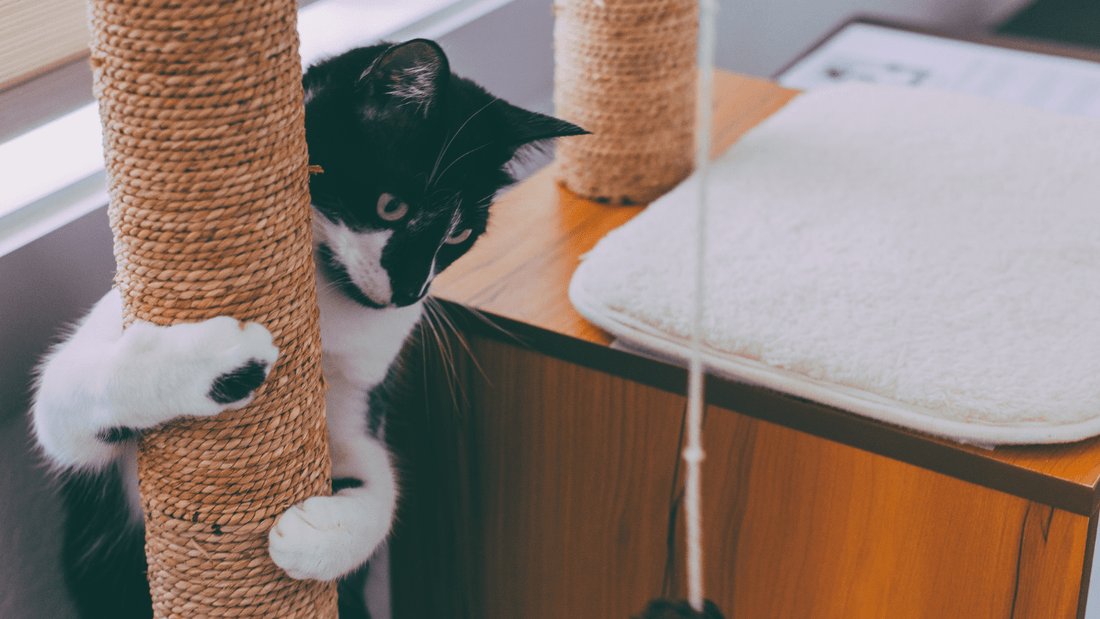If you're a cat owner, you know that cats love to scratch. It's a natural behavior for them, and it helps keep their claws healthy and sharp. However, scratching can also damage furniture and other household items, which is why it's important to train your cat to use a scratching post. Here are some tips to help you train your cat to use a scratching post:
-
Choose the right scratching post There are many different types of scratching posts available, from cardboard scratchers to carpeted posts to sisal rope posts. Choose a post that is tall enough for your cat to stretch out fully and sturdy enough that it won't wobble or tip over. Some cats prefer vertical scratching posts, while others prefer horizontal scratchers.
-
Place the scratching post in the right location Cats often scratch in areas where they spend a lot of time, such as near their food and water bowls or their favorite sleeping spots. Place the scratching post in a prominent location in your home where your cat is likely to see and use it.
-
Encourage your cat to investigate the scratching post Cats are curious animals, so encourage your cat to investigate the scratching post by placing treats or toys near it. You can also rub a little bit of catnip on the post to attract your cat's attention.
-
Reward your cat for using the scratching post When your cat uses the scratching post, praise them and give them a treat. This positive reinforcement will help your cat associate the scratching post with good things and encourage them to use it more often.
-
Discourage your cat from scratching other items If you catch your cat scratching furniture or other household items, discourage them by saying "no" in a firm voice or clapping your hands. You can also place double-sided tape or aluminum foil on the items you want to protect, as most cats dislike the texture of these materials.
-
Trim your cat's nails regularly Regular nail trims can help reduce the damage caused by scratching and make it less necessary for your cat to scratch. Use a pair of cat-specific nail clippers to trim your cat's nails, or ask your veterinarian for a demonstration.
In conclusion, training your cat to use a scratching post requires patience and persistence, but it's worth the effort to protect your furniture and other household items. Choose the right scratching post, place it in a prominent location, encourage your cat to investigate it, and reward them for using it. With a little effort, you can train your cat to use a scratching post and enjoy a scratch-free home.

